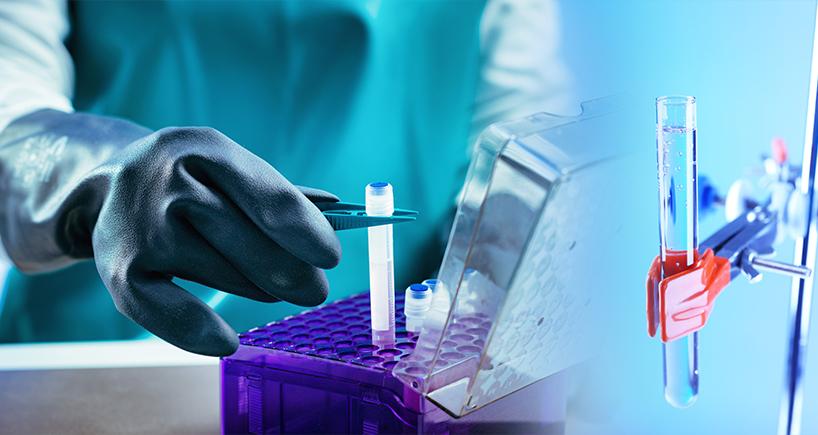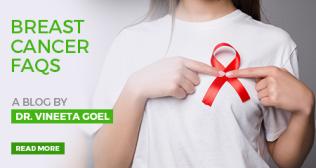
Liquid Biopsy Procedure in Cancer Treatment - Fortis Healthcare
The conventional usage of term biopsy with respect to Oncology field refers to microspopic examination of tissue sample for confirmation and characterisation of cancer.
Liquid biopsy (LB) tests various biological fluids like Blood, Urine , Saliva , CSF , Pleural Fluid etc for detection of cancers.
Background of Liquid Biopsy (LB):
Mandel and Metais in 1948 showed presence of circulating free DNA (cfDNA) in human blood. Dennis Lo showed presence of fetal Y chromosomes in the blood of pregnant mothers carrying male babies that helped in identifying point mutations, aneuploidy and genetic anomalies. In 1977 it was reported that levels of cfDNA were higher in blood of cancer patients than healthy individuals. These cf DNA had peculiar genetic mutations that help in characterisation of cancer and in detection specific molecular anomaly and are termed as ct DNA. The first FDA approval for LB was given in 2016 known as the ctDNA-based companion diagnostic test for Lung Cancer.
LB is easy to carry out and is reproducible over time. LB discerns specific cancer related mutations that in turn help in therapeutic choices and also helps in monitoring treatment response. The main and only drawback of LB is low yield due to limited amount biomarkers in body fluids.
The circulating bio-markers in body fluids are circulating cell-free tumor DNA (ctDNA), circulating tumor cells (CTCs) or circulating RNA c RNA , proteins, and lipids constituting exosomes, and Tumor Educated Platelets (TEP). By detection of circulating bio-markers , LB helps in detection of cancers as well as genetic changes associated with particular cancer that in turn has both prognostic and predictive and therapeutic importance. It has been estimated that one milliliter of blood contains 25 ng of cell-free DNA. Further a tumor of 100 g sheds about 3.3% of ct DNA daily..
Principe of Liquid Biopsy (LB):
Blood withdrawal (EDTA tubes by qualified personnel ) 🡪 Transportation time upto 3 hours 🡪 Separation of plasma (2 steps method : low-speed centrifugation (1200- 1600 g) to avoid leukocyte lysis and a second, high-speed centrifugation of the supernatant (3000 g) to remove all contaminants) 🡪 Storage @ 20 C x 1 month or -80 C x 🡪 Thawing 🡪 cf DNA (direct related with tumour burden) 🡪 ctDNA release 1. RT –PCR method 2. Digital PCR . 3 . NGS method 🡪 Results
LB detection depends on:
- Amount of fluid taken ,
- Standard practices for proper collection and transportation ,
- Methodology for processing and storage of cfDNA
- Experience of laboratory services .
- Burden of malignancy - Advanced stage of malignancy has high concentration of ctDNA . Early stage , oligometastatic, brain or bone only metastatic site have low yields.
Type of sample taken . In CNS malignancy ,CSF fluid has high yield as compared to plasma.
Usage of LB in different Solid Cancers :
- Lung Cancer – For newly diagnosed advanced NSCLC patients., LB helps in detection of driver mutation like EGFR , ALK , ROS , RET , MET , BRAF , ERBB2 , KRAS , MAP 2 K1 , PIK3CA , TP 53. LB also detects acquired mutation exon 20 T 790 M EGFR mutations.
- Breast cancer - LB helps of genes frequently mutated in breast Cancer like Estrogen receptor 1 (ESR1), ERRB2 , ERBB3 , K RAS , TP 53 , and importantly PI3K 3 CA ,. These markers have direct correlation with the tumor burden .ESR1 gene predicts resistance to treatment with Hormonal therapy. PIK3CA mutation occurs in 50 % patient who progress on CD K 4/6 inhibitors where Alpelisib is used.
- Colorectal cancer - LB detects ctDNA in colorectal cancer (CRC) that has prognostic value in. LB also detects RAS and BRAF mutations that help in decision for usage of targeted therapy. LB also can be done for acquired resistance to anti-EGFR therapies for a rechallenge strategy in the evaluation of RAS mutational status on ctDNA in patients with RAS wild-type mCRC with.
- Melanoma - LB helps in detection of BRAF and NRAS mutations in patients with melanoma and monitoring of ctDNA during treatment.
- Monitoring of therapeutic response: LB helps in detection of MRD in solid cancers by quantification of ct DNA levels.
- LB in Urine– In Colon Cancer were even used for analysis of other solid tumors, including KRAS detection in patients with stage IV pancreatic cancer, and in stage III-IV CRC patients.
- LB in Saliva - detect c-erbB-2 in saliva specimens of BC patients.
- LB in CSF– detects for tumors of central nervous system (primary or metastatic) due to higher presence of cfDNA in CSF with respect to matched plasma samples.
- LB from pleural effusions – detects EGFR sensitizing mutations by analyzing the cfDNA extracted from pleural effusion.
- LB in patients on Immunotherapy - Detection of cfDNA/ctDNA, CTCs for patients on immunotherapy show less response to treatment.
Clinical Scenarios:
82 years old male , Mr X , ,with co morbidities of COPD, Coronary Artery Disease , Hypertension, Type II Diabetes had clinical history of cough , breathlessness and oxygen dependent weight loss and decreased appetite for 2 months. He was evaluated by Pulmonologist and Cardiologist . Chest X ray showed multiple small opacities in both lungs. 2 D Echo showed EF 55 % with no regional wall motion abnormalities. He was referred to Medical Oncologist for further care. PET CT W/B showed FDG avid multiple lesions in both lungs, FDG avid lesion in Left Adrenal Gland and D 11 , D 12 and Multiple Ribs. CE MRI brain showed age related atrophy. Patient was symptomatic for his disease and refused for tissue biopsy. Family members were explained the clinical scenario and option of LB was given. Liquid biopsy was ordered that showed presence of malignancy that was EGFR mutation positive, He was started on Tab. Osimeritinib 80 mg once a day. After 2 weeks he showed significant clinical response and was off oxygen. After completion of 3 months of Tab Osimeritinib , PET CT was repeated that showed near competed resolution of Lung and Skeltal lesion. Currently patient is on Tab Osimeritinib 80 mg for 9 months.
- 42 year old female, Mrs Y was diagnosed with Stage IV carcinoma breast diagnosed three years back. Her medical records revealed her Breast Biopsy showed IDC with IHC showed ER = 8/8/, PR =8/8 , Her 2 = 0 and was on Tab Ribociclib 600 mg + Tab Anastrazole 1 mg for past years. She now started with complaints increasing fatigue and bony pains. PET CT was done that showed features new FDG avid skeletal lesions and subcentimeric FDG avid lung lesions. Unfortunately her biopsy sample was not preserved. Liquid biopsy for PIK 3 CA mutation was done that came positive. She was started on Tab Alpelisib 150 mg BD and Inj Fulvestrant 250 mg + 250 mg I/M . After 1 month she showed clinical improvement. PET CT repeated showed metabolic response to Lung Lesions. She is currently on Tab alpelisib 150 mg BD and Inj Fulvestrant 250 mg + 250 mg I/M for 6 months with normal ADLs.
Conclusion:
Liquid Biopsy has added as new armamentarium in diagnosis and monitoring in Oncology. It has attractive advantage of being non invasive that has pivotal role in cases where biopsy cannot be done or patient is not fit for biopsy or in cases patient refuses biopsy.



















